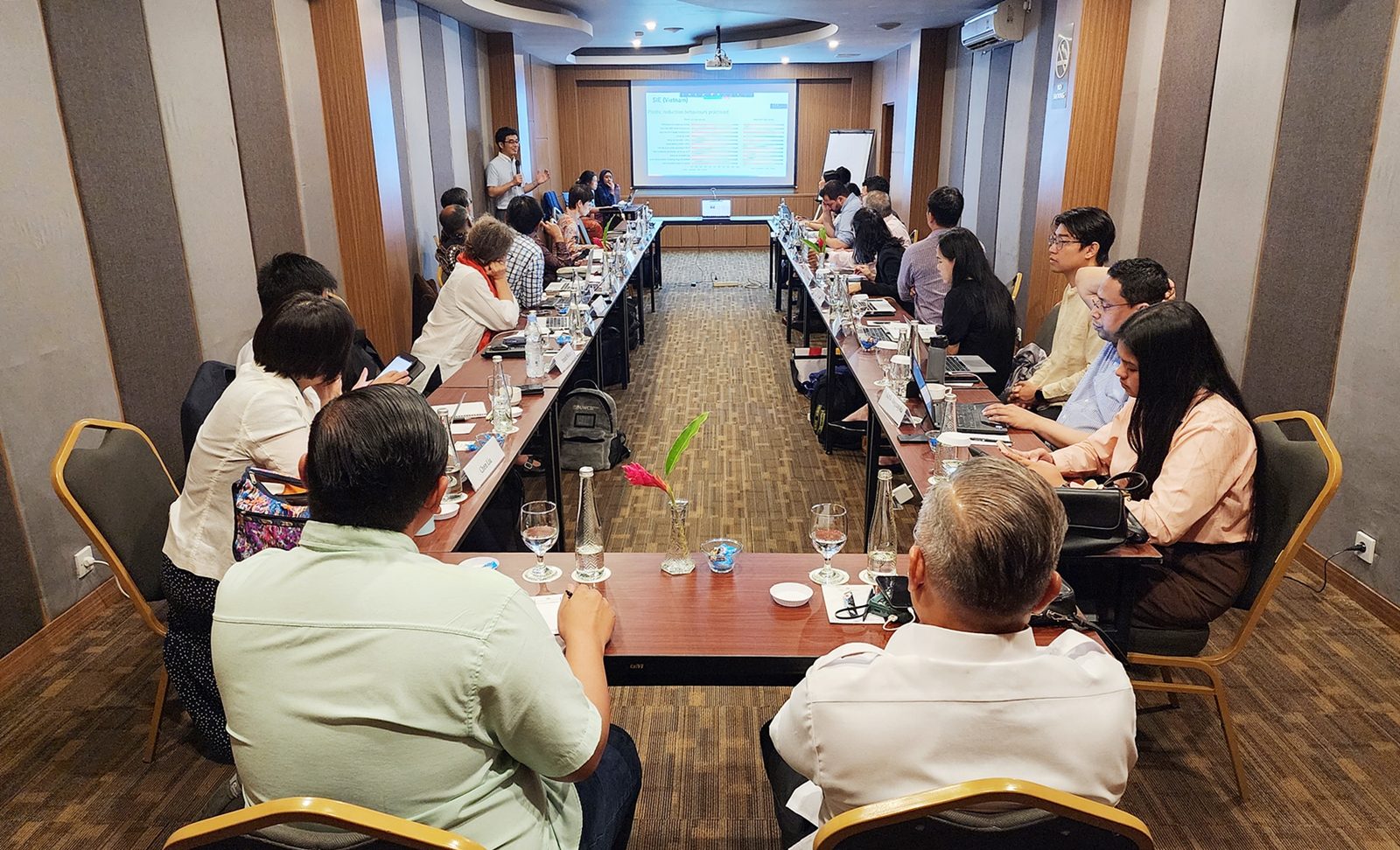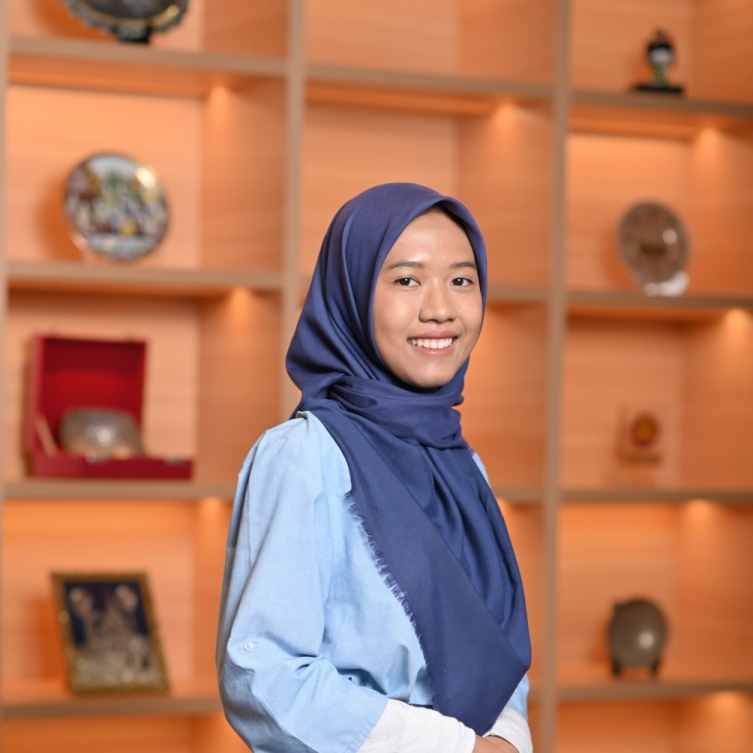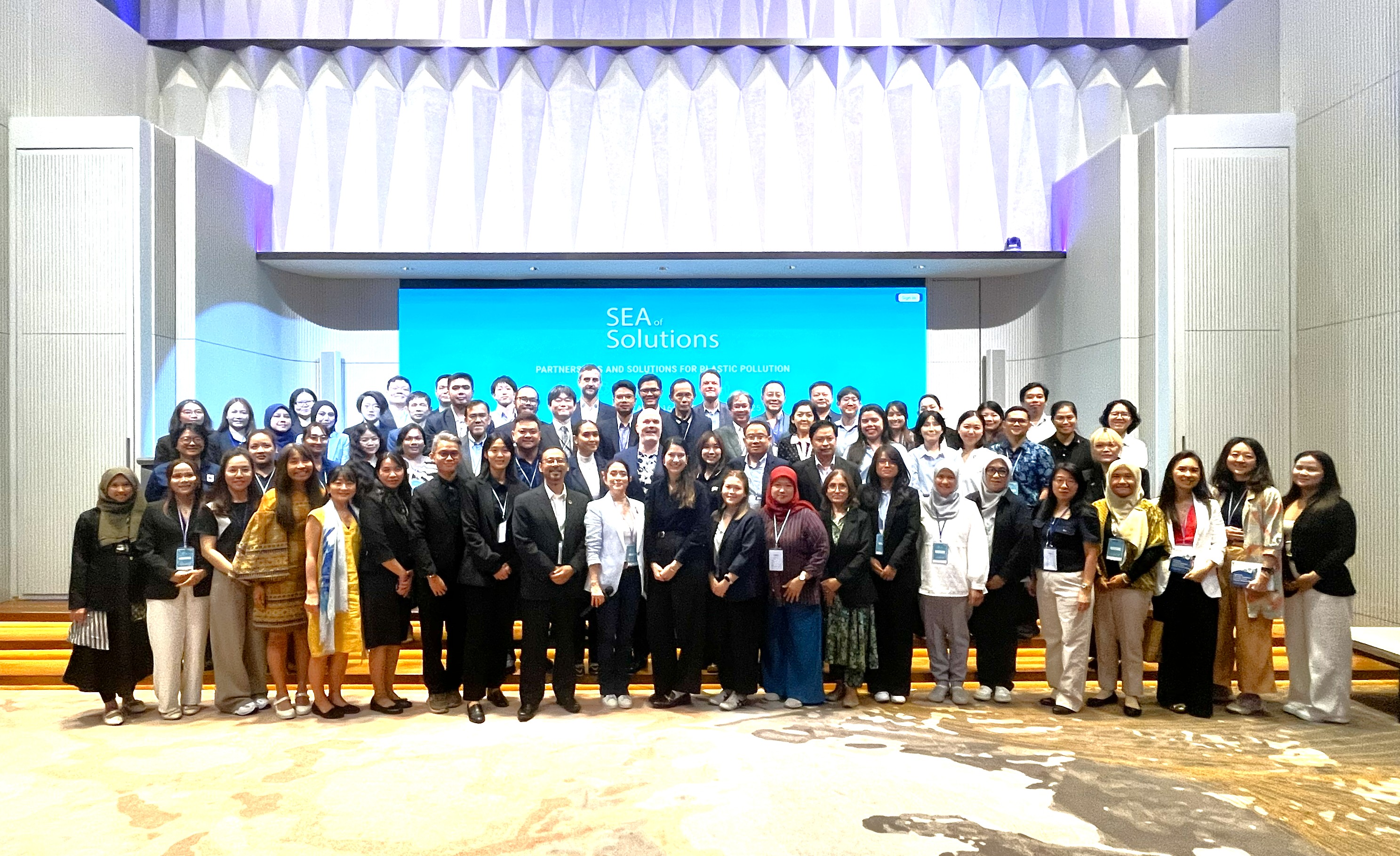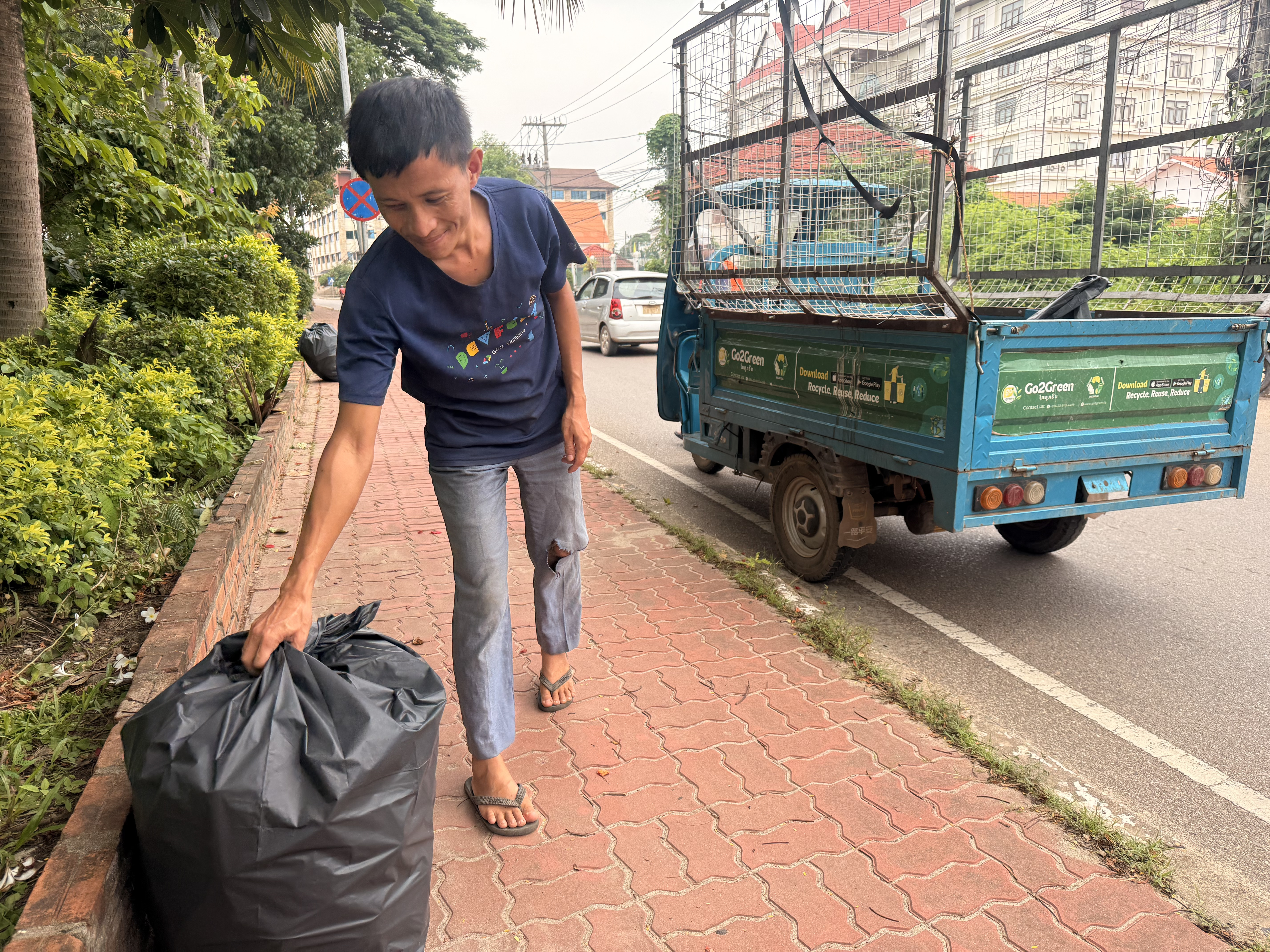

Denpasar, 24-25 May 2023: The fourth meeting of ERIA’s Experts Working Group on Marine Plastic Debris called for the development of standardised methodologies for the material flow analysis of plastics and the monitoring of plastic pollution in the environment. The experts agreed this will support reporting for the implementation of the upcoming international legally binding instrument on plastic pollution, which is being discussed by the Intergovernmental Negotiating Committee (INC).
Dr Noriko Tamiya-Hase, Deputy Director of the Office of Policies against Marine Plastics Pollution at Japan's Ministry of the Environment, highlighted in her opening remarks the role of the Experts Working Group (EWG) in improving understanding of the plastic pollution situation in the ASEAN region.
‘With sufficient data and analysis, the group can formulate the best way to tackle the marine plastic debris issue for each Southeast Asian country with its own different sets of challenges,’ she said.
Dr Suphaphat Kwonpongsagoon, Associate Professor at Mahidol University, Thailand, said that to develop effective measures it is crucial to identify the root causes of pollution through a material flow analysis (MFA) of the whole life cycle of plastic. However, MFA accuracy and reliability greatly depends on the quality and quantity of available data, which is limited and unstandardised in most cases.
Dr Amila Abeynayaka, Institute for Global Environmental Strategies (IGES) Policy Researcher, said understanding local context is also essential when quoting MFA data to ensure it is relevant and comprehensible on a national, regional, and global scale.
He pointed out the need for a comprehensive waste management policy prioritising MFA, which ensures thecomplete data collection of plastic production upstream to its management downstream.
Monitoring Plastic Leakage into the Aquatic Environment
Another MFA objective is to connect the sources, pathways, and final sinking of materials, which in the case of plastics entails its leakage into the aquatic environment. There are a number of innovations to monitor the flow of plastic leakage into water bodies, including the use of floating devices such as drifters and bottle tracking that mimic the movement of plastic debris.
Professor Suchana Chavanich, from Chulalangkorn University, Thailand, said such devices have been used in Thailand, in addition to the interceptor deployed by The Ocean Cleanup at the Chao Phraya River, to monitor the amount of waste flowing in the river and further reduce its leakage to the ocean.
Japan also uses high-resolution mapping of macroplastic and microplastic emissions from the land into the sea. The results, presented by Professor Yasuo Nihei from Tokyo University of Science, showed that higher emissions were observed from urban areas, including Tokyo metropolitan area, Nagoya, and Osaka.
‘We believe that our methodology can also be employed to evaluate plastic emissions in [the] ASEAN region. Considering sufficient data including geographical data of the water basin and waste management data [is] available,’ he said.
Some plastic waste in the aquatic environment may end up in biotas when it is mistakenly digested. For this reason, Mr Michikazu Kojima, ERIA Senior Advisor; together with Dr Yet Yin Hee, a marine science expert supporting the Centre, proposed the development of a monitoring and assessment methodology using bioindicators.
‘We have been seeing cases of plastic ingestion and entanglement of biota throughout the news, and we think it is important to develop a standardised methodology for biota surveys that is relevant and applicable in [the] ASEAN region to assess the impact of marine litter,’ said Dr Hee.
Interventions on Plastic Consumption
To reduce the amount of plastic leakage, the experts emphasised the importance of turning off the tap through interventions at the consumer level.
For insights on consumer behavioural change, Dr Chen Liu, IGES Research Manager of Sustainable Consumption and Production, evaluated the impact of COVID-19 on the use of single-use plastics (SUPs) in ASEAN households. The results showed an increase in SUP use in the Philippines, especially for disinfectant and plastic packaging, due to increased online food delivery.
‘However, we observed varied changes in other locations. For instance, there was a decrease of use in Phnom Penh, Cambodia for plastic bottles and plastic shopping bags. This led us to conclude that the pandemic brought a positive impact in reducing household SUPs in low-income countries and a negative impact in middle-income countries,’ she said.
A project on the Application of Behavioural Insights Approaches for Plastic Reduction, building on already gathered knowledge, has beenimplemented in four ASEAN cities under a collaboration between ERIA and IGES. Dr Atsushi Watabe, IGES Programme Director of Sustainable Consumption and Production, said itwould develop a toolkit for reducing SUP in cities and communities, followed by a workshop based on the results to further scale up behavioural insights.
The Regional Plastics Outlook
Intervention in consumer behaviour is becoming more and more essential as plastic waste is projected to quadruple in South and East Asia in 2060, according to the Global Plastics Outlook report by the Organisation for Economic Co-operation and Development (OECD). The report provides a comprehensive assessment of the current state of plastic production, utilisation, and waste generation, and the economic factors driving these trends.
ERIA, together with the OECD and IGES, is diving deeper into the case of Southeast Asia by developing the Regional Plastics Outlook to evaluate the region's unique plastic policy challenges and explore potential approaches to address them.
‘We are currently in the phase of data collection for the modelling, and we will greatly benefit from collaborations with experts in this working group,’ said Dr Ruben Bibas, OECD Environment Directorate Economist Modeller.
The report, which will also assess the environmental impacts of the business-as-usual leakage of plastics, should be published by the end of 2024, according to the OECD, ERIA and IGES team.
Denpasar, 24-25 May 2023: The fourth meeting of ERIA’s Experts Working Group on Marine Plastic Debris called for the development of standardised methodologies for the material flow analysis of plastics and the monitoring of plastic pollution in the environment. The experts agreed this will support reporting for the implementation of the upcoming international legally binding instrument on plastic pollution, which is being discussed by the Intergovernmental Negotiating Committee (INC).
Dr Noriko Tamiya-Hase, Deputy Director of the Office of Policies against Marine Plastics Pollution at Japan's Ministry of the Environment, highlighted in her opening remarks the role of the Experts Working Group (EWG) in improving understanding of the plastic pollution situation in the ASEAN region.
‘With sufficient data and analysis, the group can formulate the best way to tackle the marine plastic debris issue for each Southeast Asian country with its own different sets of challenges,’ she said.
Dr Suphaphat Kwonpongsagoon, Associate Professor at Mahidol University, Thailand, said that to develop effective measures it is crucial to identify the root causes of pollution through a material flow analysis (MFA) of the whole life cycle of plastic. However, MFA accuracy and reliability greatly depends on the quality and quantity of available data, which is limited and unstandardised in most cases.
Dr Amila Abeynayaka, Institute for Global Environmental Strategies (IGES) Policy Researcher, said understanding local context is also essential when quoting MFA data to ensure it is relevant and comprehensible on a national, regional, and global scale.
He pointed out the need for a comprehensive waste management policy prioritising MFA, which ensures thecomplete data collection of plastic production upstream to its management downstream.
Monitoring Plastic Leakage into the Aquatic Environment
Another MFA objective is to connect the sources, pathways, and final sinking of materials, which in the case of plastics entails its leakage into the aquatic environment. There are a number of innovations to monitor the flow of plastic leakage into water bodies, including the use of floating devices such as drifters and bottle tracking that mimic the movement of plastic debris.
Professor Suchana Chavanich, from Chulalangkorn University, Thailand, said such devices have been used in Thailand, in addition to the interceptor deployed by The Ocean Cleanup at the Chao Phraya River, to monitor the amount of waste flowing in the river and further reduce its leakage to the ocean.
Japan also uses high-resolution mapping of macroplastic and microplastic emissions from the land into the sea. The results, presented by Professor Yasuo Nihei from Tokyo University of Science, showed that higher emissions were observed from urban areas, including Tokyo metropolitan area, Nagoya, and Osaka.
‘We believe that our methodology can also be employed to evaluate plastic emissions in [the] ASEAN region. Considering sufficient data including geographical data of the water basin and waste management data [is] available,’ he said.
Some plastic waste in the aquatic environment may end up in biotas when it is mistakenly digested. For this reason, Mr Michikazu Kojima, ERIA Senior Advisor; together with Dr Yet Yin Hee, a marine science expert supporting the Centre, proposed the development of a monitoring and assessment methodology using bioindicators.
‘We have been seeing cases of plastic ingestion and entanglement of biota throughout the news, and we think it is important to develop a standardised methodology for biota surveys that is relevant and applicable in [the] ASEAN region to assess the impact of marine litter,’ said Dr Hee.
Interventions on Plastic Consumption
To reduce the amount of plastic leakage, the experts emphasised the importance of turning off the tap through interventions at the consumer level.
For insights on consumer behavioural change, Dr Chen Liu, IGES Research Manager of Sustainable Consumption and Production, evaluated the impact of COVID-19 on the use of single-use plastics (SUPs) in ASEAN households. The results showed an increase in SUP use in the Philippines, especially for disinfectant and plastic packaging, due to increased online food delivery.
‘However, we observed varied changes in other locations. For instance, there was a decrease of use in Phnom Penh, Cambodia for plastic bottles and plastic shopping bags. This led us to conclude that the pandemic brought a positive impact in reducing household SUPs in low-income countries and a negative impact in middle-income countries,’ she said.
A project on the Application of Behavioural Insights Approaches for Plastic Reduction, building on already gathered knowledge, has beenimplemented in four ASEAN cities under a collaboration between ERIA and IGES. Dr Atsushi Watabe, IGES Programme Director of Sustainable Consumption and Production, said itwould develop a toolkit for reducing SUP in cities and communities, followed by a workshop based on the results to further scale up behavioural insights.
The Regional Plastics Outlook
Intervention in consumer behaviour is becoming more and more essential as plastic waste is projected to quadruple in South and East Asia in 2060, according to the Global Plastics Outlook report by the Organisation for Economic Co-operation and Development (OECD). The report provides a comprehensive assessment of the current state of plastic production, utilisation, and waste generation, and the economic factors driving these trends.
ERIA, together with the OECD and IGES, is diving deeper into the case of Southeast Asia by developing the Regional Plastics Outlook to evaluate the region's unique plastic policy challenges and explore potential approaches to address them.
‘We are currently in the phase of data collection for the modelling, and we will greatly benefit from collaborations with experts in this working group,’ said Dr Ruben Bibas, OECD Environment Directorate Economist Modeller.
The report, which will also assess the environmental impacts of the business-as-usual leakage of plastics, should be published by the end of 2024, according to the OECD, ERIA and IGES team.

Research Associate



